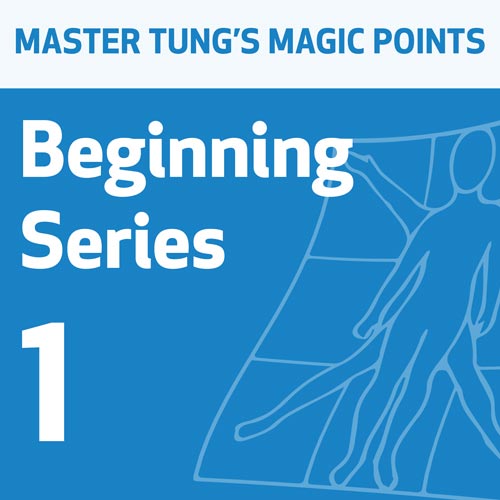Using Leg Points to Create the Foundation for Your Treatments
“Points located on the lower leg and thigh are extremely effective for adjusting the function of the entire body. They treat the organs and bowels and internal and external diseases. Their results are fast, accurate, and often astonishing. Most of these points are needled in groups that occur along the same line. For instance, there are the Four Horses, Four Flower points, Three Emperors, Three Yellows, etc. Some of these points are located in the same places as the regular fourteen channel points. However, because their usage and indications are different, so are their names.” – Dr. Lee, 1992
In keeping with Dr. Lee’s description, I find that when creating a treatment suited to each patient, I frequently build my protocol around Master Tung’s thigh points or calf points. Occasionally, I even carefully combine them:
- Thigh points, located in large muscle, have a vast nerve and blood supply, which accounts for their extremely powerful Dao Ma presentations. Most thigh points are Dao Ma combinations of a Chief Point and two Supporting Points. To those, we can choose to add a few specific distal points, to refine and complement the foundation upon which the treatment is based.
- Calf points are likewise powerful and can also be used as a base upon which to build and refine. However, their remarkable strength is less about their reserves of qi and blood, and more about their functions as Transporting Points, as we shall see once we delve into them individually.
Needling notes for Dao Ma patterns
Nearly all of Tung’s combinations on the thighs and calves are three-point Dao Ma patterns; we choose to needle one to three of these points. Generally, the middle point in the pattern is the Chief Point, the first one to be located and needled. We measure from the Chief Point to find the two Supporting Points. It is not important which Supporting Point is needled first, though typically we needle the more proximal point and then the distal one.
- Directional needling: Occasionally, the points are needled in the direction of the affected area. For example, we needle 77.05-77.07 Three Weights distal to proximal when treating diseases of the head and brain.
- Stimulation: When choosing protocols to treat the whole body or an organ system, we needle the middle point with strong stimulation, then add the Supporting Points on either side, again with strong stimulation; finally, we return to the Chief Point to restimulate, sending the energy in both directions. This form of needle stimulation is largely responsible for the phenomenal effects of Tung’s acupuncture.
Combining Dao Ma patterns in deficiency (more is not better)
We do not use multiple three-point Dao Ma patterns simultaneously, even when the patient is physically strong, because one bilateral three-point pattern is powerful enough to do just about any job. Tung’s practitioners understand that fewer needles usually provide a better treatment result, and that every needle needs to add and not unnecessarily disperse or detract from the overall treatment. If we are using points on the thigh and calf simultaneously, it is necessary to choose carefully, keeping the overall foundational treatment to a maximum of six needles.
For complicated cases, chronic or weak patients: We may wish to combine the functions of two Tung’s patterns. This is done by taking the Chief Point of one pattern and combining it with the Chief Point and one Supporting Point of another pattern. For example, when treating Parkinson’s disease, we are almost always treating an elderly and often frail patient, so we may choose to needle 88.12 Bright Yellow with 77.18-77.21 Two Emperors. Alternatively, we might choose Bright Yellow and 88.14 This Yellow, together with 77.18 Kidney Gate (Shen Guan). The patient will weaken if too many powerful points are needled simultaneously. Pay careful attention to this caution; otherwise patients will be tired and suffer the consequences after your treatments.
Needling with qi
Typically, practitioners in my classes have not been previously taught to use their qi in needling their patients, so their treatments are often less effective than they could be. The potency of a treatment has everything to do with the combination of the practitioner’s qi meeting the patient’s qi at the point being needled. Put some qi into your needles, and your treatments will be instantly effective; neglect to do so and your patients will look for help elsewhere. Occasionally, with needle-phobic, extremely weak, and/or elderly patients, I need to hold back my qi from the needle in order to avoid overwhelming them. Though it is my opinion that Tung’s points are exceptional, I believe that needling the correct points in their proper location, with qi, has much to do with the miraculous results I see in my clinic. The saying, “Every needle takes a little piece of your qi,” is true, and we want to build and protect our own qi so that we may provide powerful results without depleting ourselves.
Foot Yang Ming (ST)
TCM teaches that the Foot Yang Ming (ST) meridian has more qi and more blood, making bleeding techniques on the Stomach channel especially advantageous. In Tung’s acupuncture system, when needling for structural problems (bone, nerve, tendon, muscle or blood vessel), we use points on channels that are on the side opposite the affected area. There is one exception to this rule, however, as the Stomach channel can be used equally effectively on the same side or opposite side. This is only important when the opposite side is overloaded with needles, and it is helpful to “spill over” to the same side (affected side) using the Stomach channel. For example, because every pathway is involved when treating a frozen shoulder, the opposite side may be excessively needled while the affected side is scarcely needled. In this case, we can needle the points found on the Foot Yang Ming on the same side as the frozen shoulder, still utilizing distal needling technique.
Reaction Areas and Tung’s channels on the legs
Some of Tung’s Dao Ma combinations and points are located between two channels recognized in TCM, effectively meaning that they share some attributes of both channels. For example, 77.05-77.07 Three Weights and 77.22-77.23 Beside Three Miles are found between the Shao Yang and Yang Ming channels, as are many other Tung’s points patterns typically assigned to the Gallbladder. To select the appropriate points after identifying the affected zang/fu (often using face and palm diagnosis), Master Tung relied in part on his family’s knowledge of Reaction Areas. When we are choosing points, we may consider the Reaction Areas, in addition to their internal/external relationships, Hand and Foot channel connections, and the special relationships that utilize the I-Ching (absent in most TCM training). Do not necessarily expect to comprehend the relationships between the Reaction Areas and the meridians on which the points are located, as this takes further understanding of the energetic operations of the points themselves. This understanding develops as you use the points successfully and see their energetic connections for yourself.
The primary Dao Ma combinations on the legs, and their Reaction Areas, are as follows:
- Lower leg: 77.01-77.02 Correct Tendons, found between the Kidney meridian and the Urinary Bladder meridian, have the Reaction Areas of Brain and Spine. 77.05-77.07 Three Weights, found between the Stomach and Gallbladder meridians, have the Reaction Areas of Heart, Lung and Spleen. 77.08-77.09 Four Flower Upper/Four Flower Middle are found on the Stomach meridian and have the Reaction Areas of Heart and Lung. 77.18-77.21 Three Emperors, found on the Spleen meridian, have the Reaction Areas of Heart and Kidney. 77.22-77.23 Beside Three Miles are found between the Stomach and Gallbladder meridians, and they have the Reaction Areas of Teeth and Lungs.
- Upper leg: There are four primary Reaction Areas with associated Dao Ma combinations located on the thigh. Starting with the Liver meridian on the medial thigh, we find 88.12-88.14 Three Yellows, which have the Reaction Areas of Liver and Heart. Moving laterally, we arrive at the Spleen meridian and 88.09-88.11 Kidney Passing Points, which have the Reaction Area of the Kidney. On the midline of the thigh, near the Stomach meridian, are 88.01-88.03 Heart Passing Points, which have the Reaction Area of Heart. Finally, moving laterally to a line found between the Stomach and Gallbladder meridians, we find my favorite Dao Ma pattern, 88.17-88.19 Four Horses, which have the Reaction Areas of Lung and Liver.
Tension in the legs
Frequently, practitioners notice that their patients, especially women, are consciously or unconsciously holding their knees together or tensing their thighs. Patients who hold their knees together tightly may have a history of sexual abuse, although this certainly is not always the case (they may not remember whether they were abused, and there is no need to bring this possibility to their attention). It is very important, however, that the legs are completely relaxed before they are needled, as most of the needles used on the thighs, and many used on the calves, are inserted deeply. It is the practitioner’s responsibility to notice how the patient is holding their legs, because if the legs are not relaxed before needling, they cannot be relaxed after the needles are placed.
- Rocking the legs: Before needling the legs, always gently rock them. Either place your fingers on both sides of the knee joint (not the patella), or hold the foot or ankle, and gently rock back and forth. This will indicate to you where tension is being held. If the patient resists the rocking, usually it is because they are trying to keep their knees together. Rather than positioning their legs myself, as this might feel like a violation, I ask them to let their knees fall outward. This phrasing enables them to recognize the holding and to relax their legs.
- Blanketing for privacy: To give your patient the greatest possible privacy, avert your eyes while covering them with a blanket. Whether they need this consideration or not, it will help them to trust you more. Then, on the side you are about to needle, move the blanket to the middle. Once the needles are inserted, I always put a small box over them and then cover the box and the patient’s body with the blanket. The box keeps the blanket from pressing on the needles. This way the patient stays warm and relaxed during the treatment.
Pregnancy cautions
“Points on the lower limb relate to the abdomen so they are generally avoided during pregnancy. If there is a disease during pregnancy the qi will look for the disease. Use very gentle stimulation; if the stimulation is too strong the qi may look for the baby” (Dr. Lee, 1992). I felt that this beautiful statement by Dr. Lee had to be included here. However, please rest assured that throughout this book, all points that should be avoided in pregnancy are clearly designated as such, under the heading “Caution.” If the point description is silent regarding pregnancy, it is perfectly fine to include it in any treatment protocol. I am very careful not to over-needle a pregnant woman. If her pregnancy is stable and progressing nicely, one or two treatments per month are adequate. Typically, I use the following variation of Dr. Lee’s Ten Great Needles Treatment, dropping LI4 and SP6 altogether:
- Dr. Lee’s Ten Great Needles Treatment modified for pregnancy: Bilaterally needle 77.08 Four Flower Upper (ST36), 77.18 Kidney Gate (Shen Guan), LI11 Qu Chi, LU7 Lie Que; add left-side 11.17 Wood (Anger) if desirable. I use 30mm needles with only light stimulation for this treatment. This wonderful tune-up is safe for pregnant patients.
Specific channel and point relationships
Gallbladder points and the head, neck and shoulders
In Tung’s body of work, many points found between the Stomach and Gallbladder channels are loosely classified as “Gallbladder channel points.” All of them have a powerful effect on the head, neck, face, jaw and five senses. Therefore, it is important to determine the root cause of the pathology before choosing from the following points: 77.05-77.07 Three Weights, 77.22-77.23 Beside Three Miles, 77.24-77.25 Leg Five/One Thousand Gold, 77.27 Outer Three Gates, 88.17-88.19 Four Horses (with or without 88.25 Center Nine Miles [GB31]). All Gallbladder points deal with joints, tendons and wind, especially Beside Three Miles, but it is also helpful to think of bone and bone marrow as related to Shao Yang (blood and Sea of Marrow). All of these points can affect the Gallbladder channel on the head and neck, so when treating head and neck problems, it is important to determine the root cause of the pathology and to ascertain what else might be going on in the body that best relates to your choice of points from the above list. The following examples illustrate my meaning:
77.05-77.07 Three Weights (Tung’s GB39)
Because they fall between the Yang Ming (ST) and Shao Yang (GB) channels, Three Weights points are especially effective in disorders related to wind and phlegm, such as brain injuries or psychosis. But also, due to the relationship with GB39, they treat bone marrow and blood diseases. This idea is additionally supported by the fact that Three Weights points have the Reaction Area of Spleen, because according to TCM, the Spleen controls the blood. So, when Three Weights are used to treat head, neck and shoulder problems, they are most effective when the patient also has some kind of blood disease, a local circulatory issue such as a stroke or vascular occlusion, or any other kind of wind and phlegm disorder.
77.22-77.23 Beside Three Miles (Tung’s GB34)
Beside Three Miles points are most frequently used in the treatment of head, neck, shoulder and arm musculoskeletal issues because they are Tung’s version of TCM’s Sea of Sinews, and thus have a powerful effect on tendons and ligaments. Additionally, they are used for otitis media and headaches because of the correspondence between the Hand and Foot Shao Yang (SJ/GB) and the way this connects to the special relationship between the Hand Shao Yang (SJ) and Foot Shao Yin (KD).
77.24-77.25 Leg Five/One Thousand Gold
These points have the Reaction Areas of Lung and Thyroid and are particularly useful for any kind of throat problem. They are included in the frozen shoulder protocol because of their relationship to the Lungs, which governs the ability to move the shoulder forward and back (done by moving the arm behind the back, as if hooking a bra).
77.27 Outer Three Gates
These points are primarily used to treat cancer anywhere in the body and would not be chosen for treatment of the head and neck unless there were also a cancer-related condition.
88.17-88.19 Four Horses
Because these points have the Reaction Areas of Lung and Liver, with a strong influence on the immune system and five senses, if I am using Four Horses to specifically treat the upper back, shoulder, neck or head, it is because the patient also has some kind of immune disorder that might involve the Lung, Liver or skin. For example, chest or rib pain related to pleurisy, emphysema, lung cancer, or even pneumonia usually responds well to Four Horses needled on the side opposite the indications.
Stomach channel
In Tung’s acupuncture, the Four Flower Line (77.08-77.14) is also known as the Stomach channel on the calf. Because of the special relationship between the Pericardium and Stomach, Four Flower points are terrific for coronary heart disease. For the same reason, Stomach channel points on the thigh have been given the name 88.01-88.03 Heart Passing Points.
Spleen channel
In Tung’s acupuncture, the Spleen channel houses very important Kidney points on both the calf and the thigh. They are not only used to treat kidney diseases such as nephritis, but also are highly effective in any situation where the TCM designation of Kidney deficiency is made.
77.18-77.21 Three Emperors
These magnificent points, including 77.18 Shen Guan (Kidney Gate), Master Tung’s Master Kidney point, are famous with every old-time Tung’s style acupuncturist for their outstanding ability to treat Kidney disorders ranging from hypertension and diabetes to hot flashes/night sweats or urinary tract disorders (including prostate). In all of Tung’s acupuncture, these might be the most frequently used points.
88.09-88.11 Kidney Passing points
These points are used for any kind of kidney organ issue; they are less used for hormonal, digestive or neurological disorders (these issues relate more to the Emperor points above). However, they can be used in pregnancy, while the Emperor points cannot.
Liver channel
Two absolutely fabulous point patterns, found on the medial thigh, are called 88.12-88.14 Three Yellows and 88.14-88.16 Gallbladder Points. For real liver disease or cholecystitis and gallstones, these unsurpassed point patterns are two of my favorites. Three Yellows, primarily used for hepatitis, are also an outstanding choice for many blood diseases, Parkinson’s disease, Meniere’s disease, and any type of exhaustion due to liver. These points are excellent for detoxification.
Other Courses By This Teacher
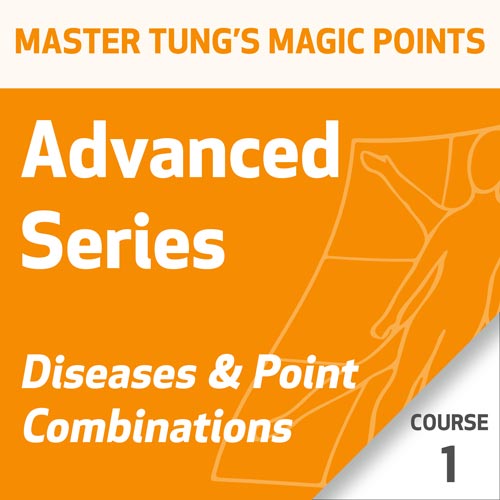

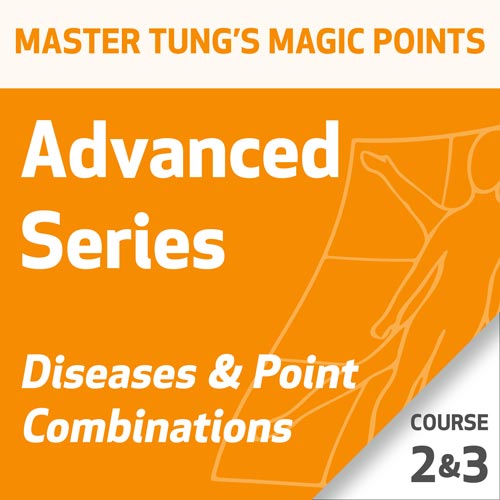

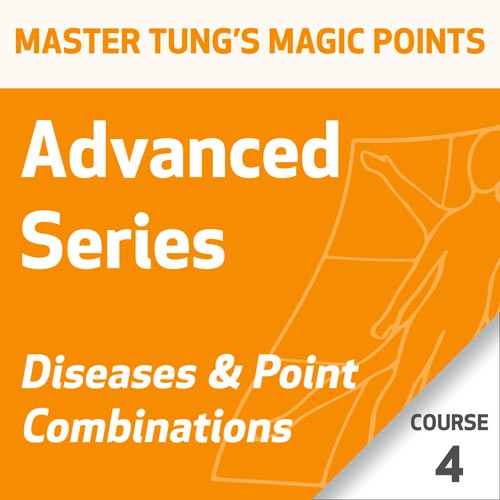

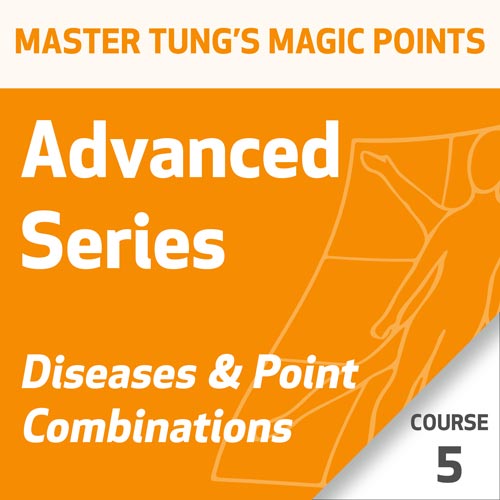

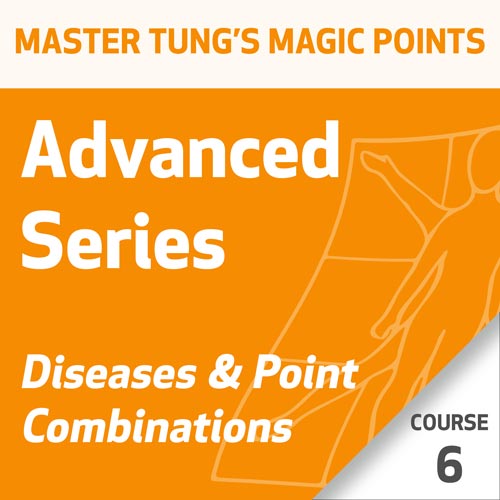

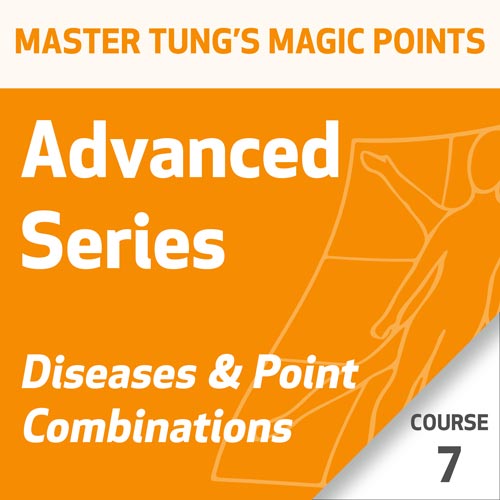

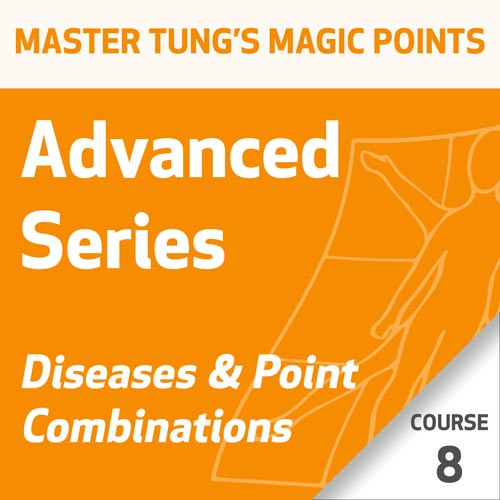

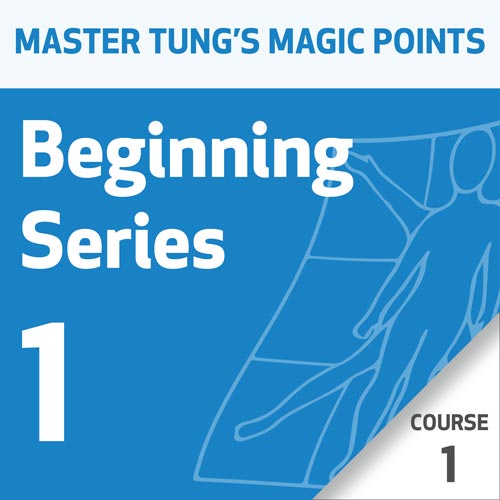

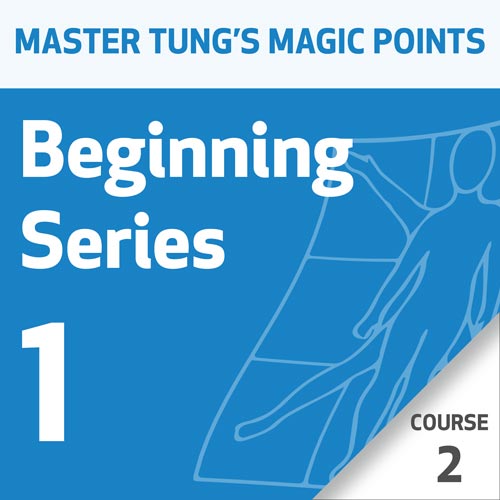

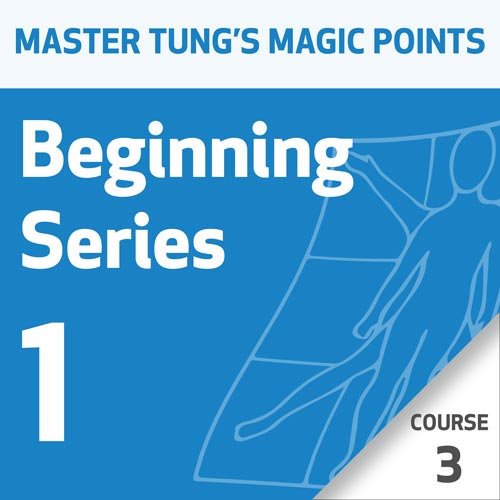

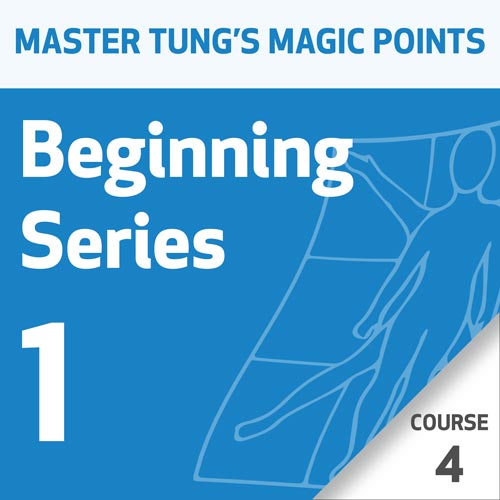

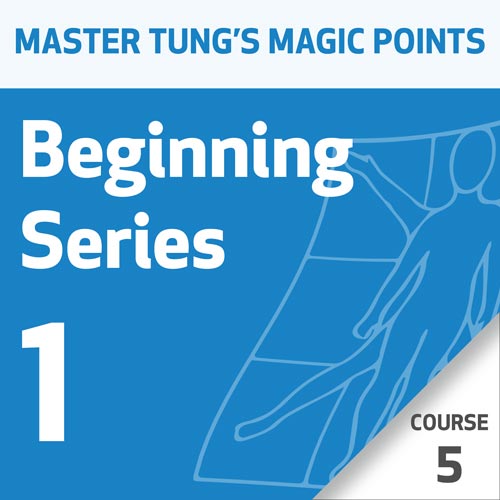

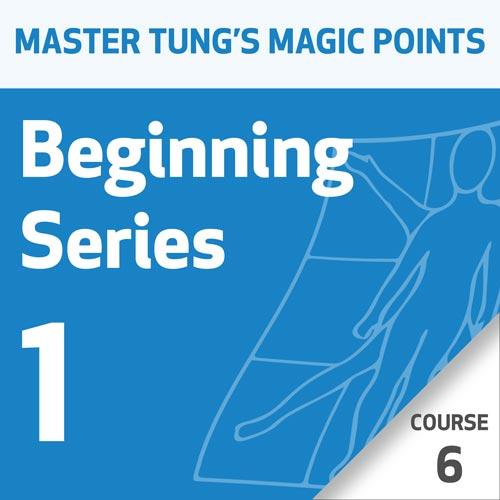

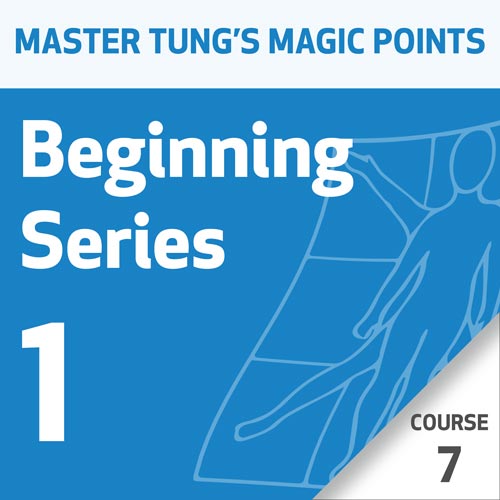

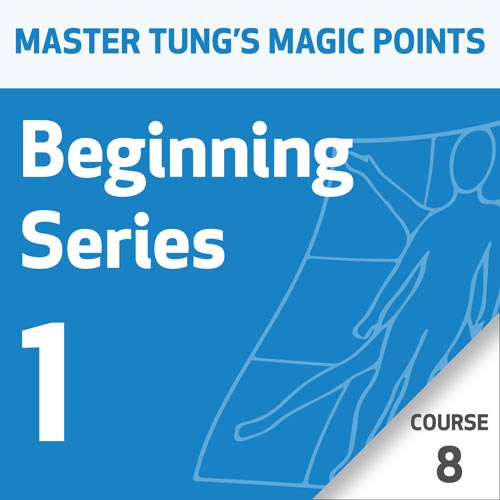

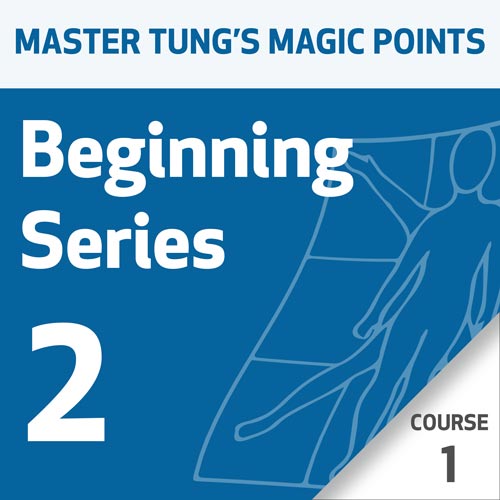

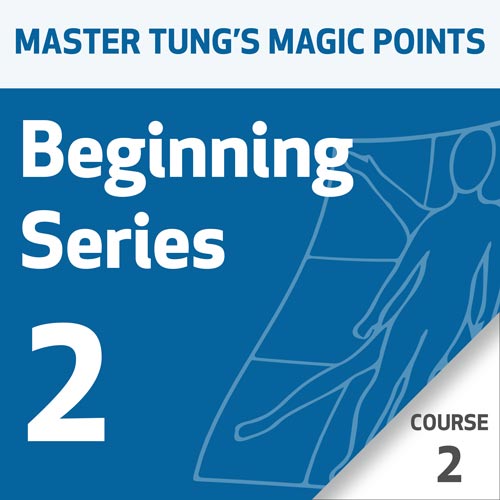

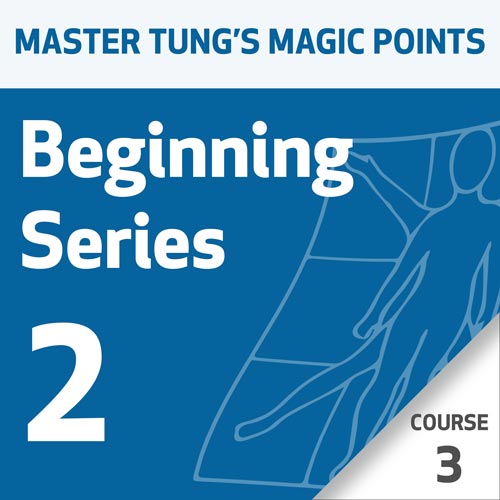

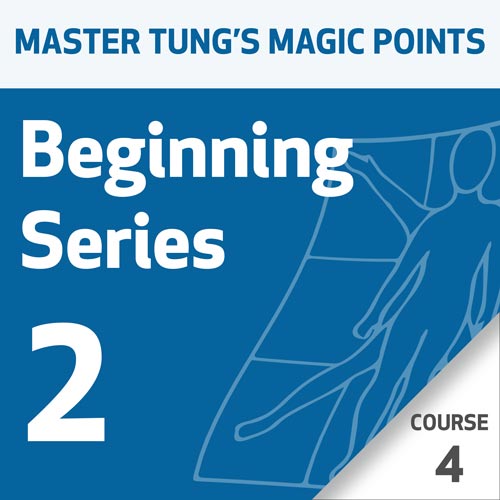

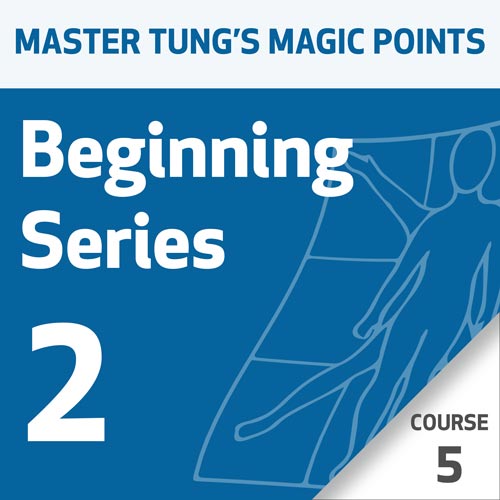

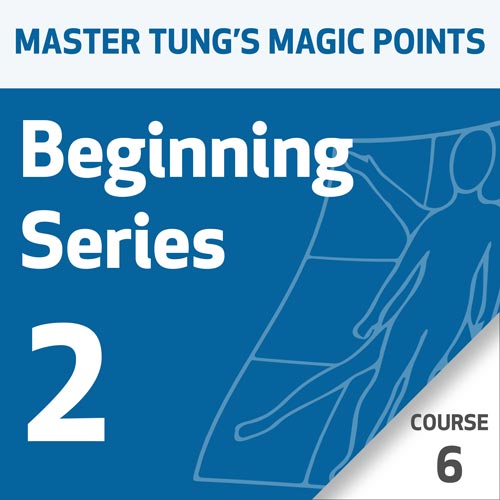

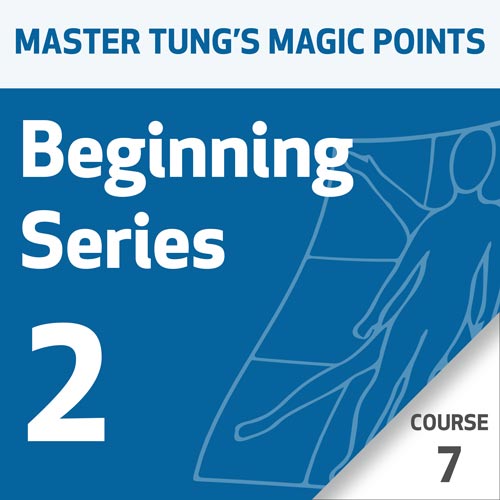

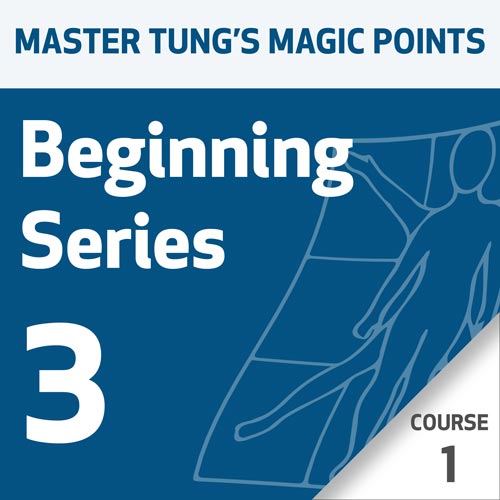



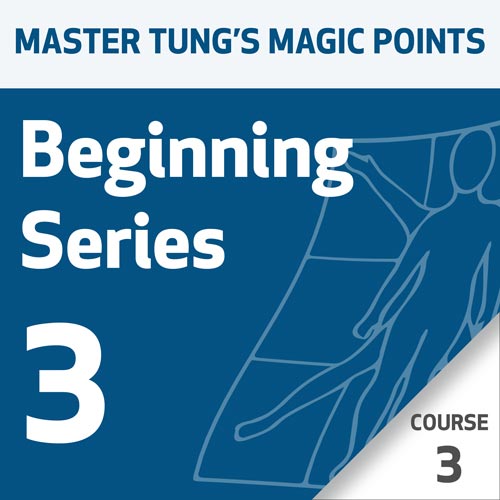

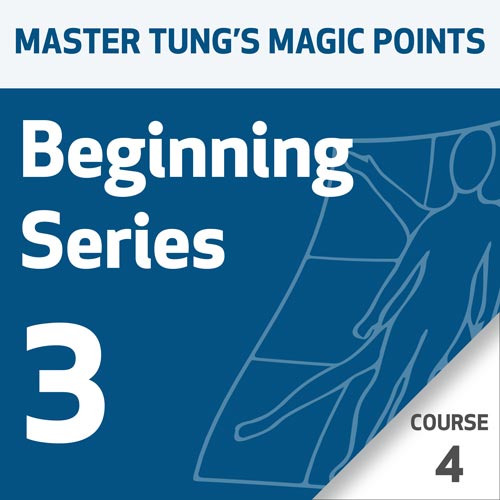

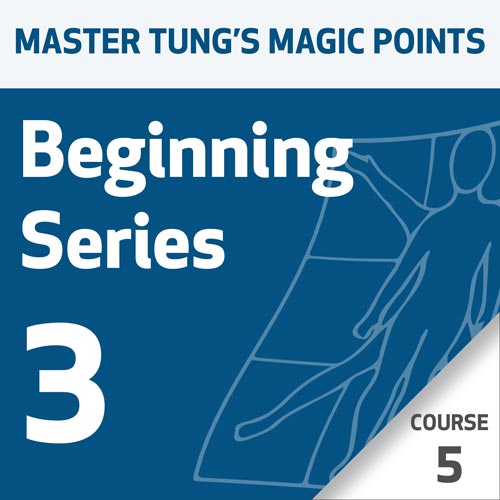

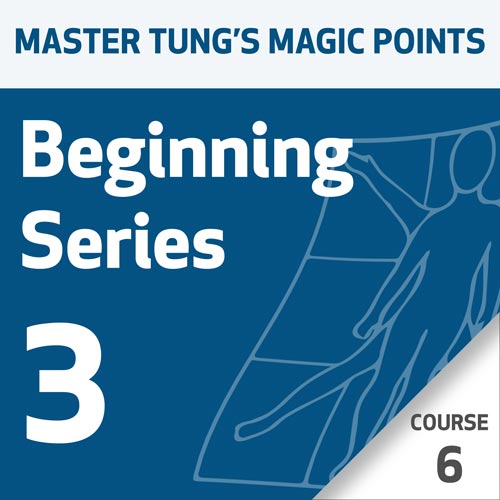

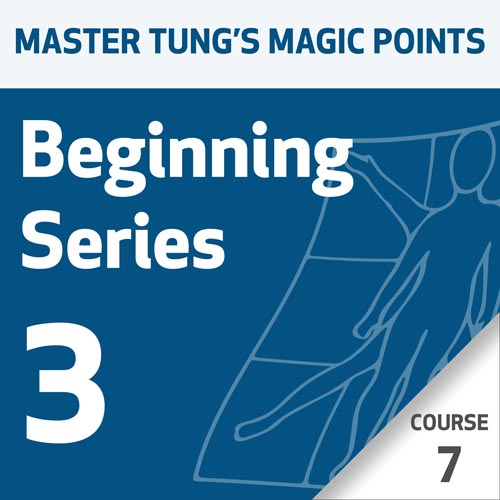



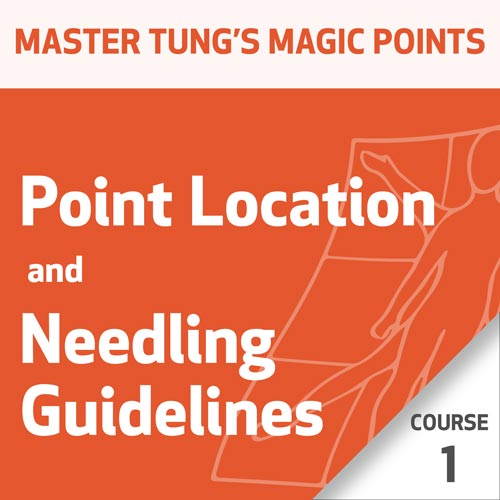

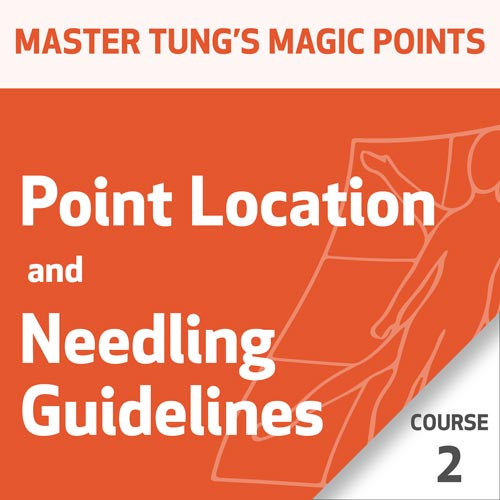

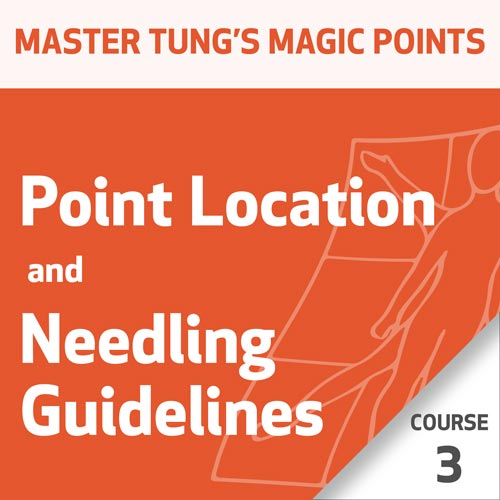

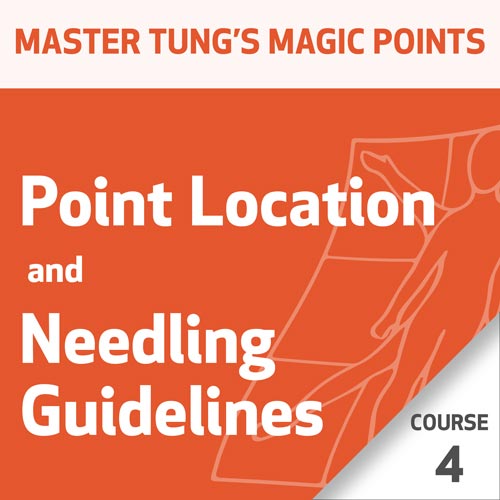

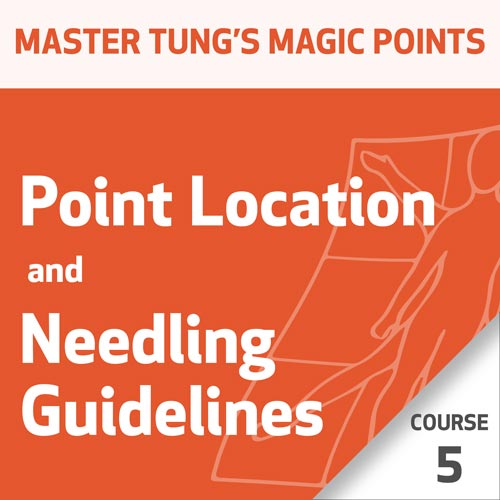

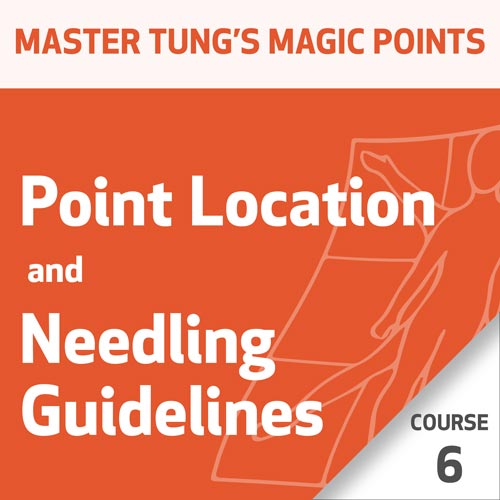

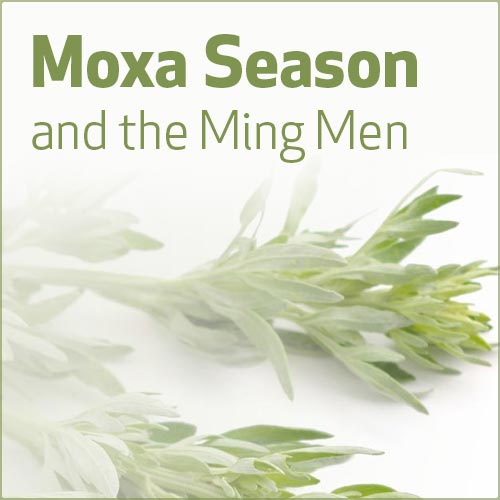

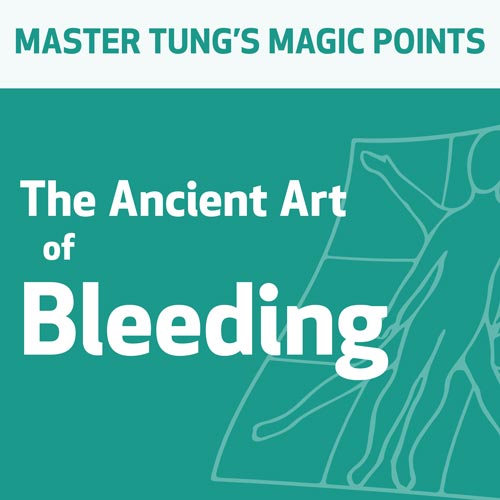

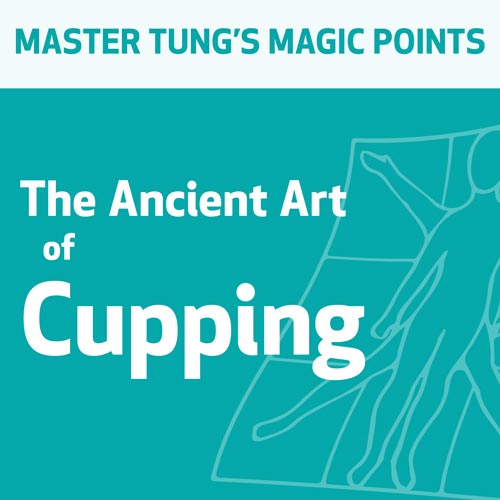

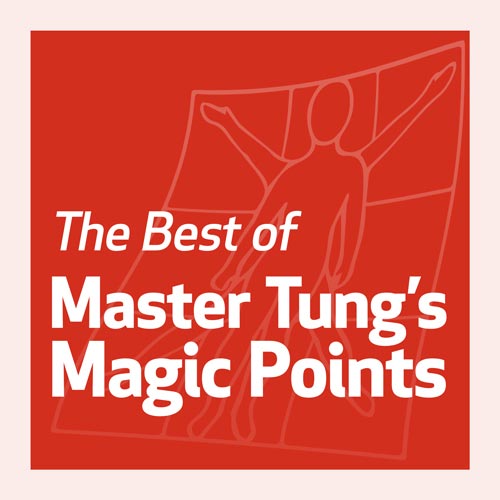

Master Tung's Magic Points: Advanced Series - Course 1
Diseases & Point Combinations, Part 1
with Susan Johnson
See In StoreOverview
In this advanced course, Susan Johnson discusses various clinical applications of Tung's Points. For those that are new to Tung's Points, you may want to take the Beginning Series beforehand, but it is not absolutely necessary, and not required. Please click the link below for a detailed outline of topics and applications covered in this course.
For a detailed table of contents, visit this link: https://bit.ly/3vYL48e
Learning Objectives
- Students will learn different ways to identify and treat headaches.
- To provide practitioners with a clear understanding of differential diagnosis and treatment protocols in relation to Tung's Points.
- Students will learn how to identify exact points to treat specific conditions.
- Students will learn various techniques on how to treat dizziness, aneurisms, hemorrhoids, and other conditions.
- To help students understand the energetic ways in which point patterns can be intelligently combined to enhance a treatment.
Your Teacher

Susan Johnson
A graduate of the ACTCM, Susan Johnson, L.Ac., has been practicing TCM for over 30 years. She studied extensively with Drs. Miriam Lee and Young Wei Chieh, and teaches Tung's Points internationally.
Category
Tags
Master Tung's Magic Points: Advanced Series - Course 2 & 3
Diseases & Point Combinations, Part 2 & 3
with Susan Johnson
See In StoreOverview
In this advanced course, Susan Johnson discusses various clinical applications of Tung's Points. For those that are new to Tung's Points, you may want to take the Beginning Series beforehand, but it is not absolutely necessary, and not required. Please click the link below for a detailed outline of topics and applications covered in this course.
Part 2: For a detailed table of contents, visit this link: https://bit.ly/3deUaXX
Part 3: For a detailed table of contents, visit this link: https://bit.ly/2T570Bh
Learning Objectives
- Students will learn how to identify exact points to treat specific conditions.
- To help students understand the energetic ways in which point patterns can be intelligently combined to enhance a treatment.
- Students will learn different ways to identify head, facial, and mouth conditions and treat them with specific points.
- To provide practitioners with a clear understanding of differential diagnosis and treatment protocols in relation to Tung's Points.
Your Teacher

Susan Johnson
A graduate of the ACTCM, Susan Johnson, L.Ac., has been practicing TCM for over 30 years. She studied extensively with Drs. Miriam Lee and Young Wei Chieh, and teaches Tung's Points internationally.
Category
Tags
Master Tung's Magic Points: Advanced Series - Course 4
Diseases & Point Combinations, Part 4
with Susan Johnson
See In StoreOverview
In this advanced course, Susan Johnson discusses various clinical applications of Tung's Points. For those that are new to Tung's Points, you may want to take the Beginning Series beforehand, but it is not absolutely necessary, and not required. Please click the link below for a detailed outline of topics and applications covered in this course.
For a detailed table of contents, visit this link: https://bit.ly/3ddibyu
Learning Objectives
- To help students understand the energetic ways in which point patterns can be intelligently combined to enhance a treatment.
- To provide practitioners with a clear understanding of differential diagnosis and treatment protocols in relation to Tung's Points.
- Students will learn how to identify exact points to treat specific conditions.
- Students will learn different ways to identify wrist, shoulder, arm, thigh, knee, ankle, foot, and hip pain and conditions, and learn how to treat these problems with specific points.
Your Teacher

Susan Johnson
A graduate of the ACTCM, Susan Johnson, L.Ac., has been practicing TCM for over 30 years. She studied extensively with Drs. Miriam Lee and Young Wei Chieh, and teaches Tung's Points internationally.
Category
Tags
Master Tung's Magic Points: Advanced Series - Course 5
Diseases & Point Combinations, Part 5
with Susan Johnson
See In StoreOverview
In this advanced course, Susan Johnson discusses various clinical applications of Tung's Points. For those that are new to Tung's Points, you may want to take the Beginning Series beforehand, but it is not absolutely necessary, and not required. Please click the link below for a detailed outline of topics and applications covered in this course.
For a detailed table of contents, visit this link: https://bit.ly/3qqMF5D
Learning Objectives
- To help students understand the energetic ways in which point patterns can be intelligently combined to enhance a treatment.
- Students will learn how to identify exact points to treat specific conditions.
- Students will learn advanced concepts about specific points such as further information about 88.01-.03 Heart Passing Points, 77.18 Kidney Gate, 11.17 Wood/Anger, 22.06-22.07 Zhong Bai/Xia Bai, 1010.18 Wood Branch, and many others.
- To provide practitioners with a clear understanding of differential diagnosis and treatment protocols in relation to Tung's Points.
- Students will learn different ways to identify and treat various diseases and conditions such as heart disease, chronic issues, rheumatoid arthritis, gallstones, and many others.
Your Teacher

Susan Johnson
A graduate of the ACTCM, Susan Johnson, L.Ac., has been practicing TCM for over 30 years. She studied extensively with Drs. Miriam Lee and Young Wei Chieh, and teaches Tung's Points internationally.
Category
Tags
Master Tung's Magic Points: Advanced Series - Course 6
Diseases & Point Combinations, Part 6
with Susan Johnson
See In StoreOverview
In this advanced course, Susan Johnson discusses various clinical applications of Tung's Points. For those that are new to Tung's Points, you may want to take the Beginning Series beforehand, but it is not absolutely necessary, and not required. Please click the link below for a detailed outline of topics and applications covered in this course.
For a detailed table of contents, visit this link: https://bit.ly/3xTpgwk
Learning Objectives
- To provide practitioners with a clear understanding of differential diagnosis and treatment protocols in relation to Tung's Points.
- Students will learn advanced concepts about specific points such as further information about SP4 and PC6 for Crohn’s disease, GB31 and A.01, 88.17-88.19 Four Horses, and the Stomach channel or Four Flower line.
- Students will learn different ways to identify and treat various diseases and conditions such as spleen, stomach, kidney, urinary diseases/conditions, ulcer pain, acid reflux, prostate and bladder infections, and many others.
- Students will learn how to identify exact points to treat specific conditions.
- To help students understand the energetic ways in which point patterns can be intelligently combined to enhance a treatment.
Your Teacher

Susan Johnson
A graduate of the ACTCM, Susan Johnson, L.Ac., has been practicing TCM for over 30 years. She studied extensively with Drs. Miriam Lee and Young Wei Chieh, and teaches Tung's Points internationally.
Category
Tags
Master Tung's Magic Points: Advanced Series - Course 7
Diseases & Point Combinations, Part 7
with Susan Johnson
See In StoreOverview
In this advanced course, Susan Johnson discusses various clinical applications of Tung's Points. For those that are new to Tung's Points, you may want to take the Beginning Series beforehand, but it is not absolutely necessary, and not required. Please click the link below for a detailed outline of topics and applications covered in this course.
For a detailed table of contents, visit this link: https://bit.ly/3jeqaPF
Learning Objectives
- Students will learn how to identify exact points to treat specific conditions.
- Students will learn advanced concepts about specific points such as further information about 77.11-77.12 Four Flower Lower and Bowel Intestine, and 11.06 Return to the Nest, etc.
- Students will learn different ways to identify and treat various diseases and conditions such as intestinal diseases/bleeding, hemorrhoids, appendicitis, herpes, impotence, and many more.
- To provide practitioners with a clear understanding of differential diagnosis and treatment protocols in relation to Tung's Points.
- To help students understand the energetic ways in which point patterns can be intelligently combined to enhance a treatment.
Your Teacher

Susan Johnson
A graduate of the ACTCM, Susan Johnson, L.Ac., has been practicing TCM for over 30 years. She studied extensively with Drs. Miriam Lee and Young Wei Chieh, and teaches Tung's Points internationally.
Category
Tags
Master Tung's Magic Points: Advanced Series - Course 8
Diseases & Point Combinations, Part 8
with Susan Johnson
See In StoreOverview
In this advanced course, Susan Johnson discusses various clinical applications of Tung's Points. For those that are new to Tung's Points, you may want to take the Beginning Series beforehand, but it is not absolutely necessary, and not required. Please click the link below for a detailed outline of topics and applications covered in this course.
For a detailed table of contents, visit this link: https://bit.ly/3dbcOQu
Learning Objectives
- To help students understand the energetic ways in which point patterns can be intelligently combined to enhance a treatment.
- To provide practitioners with a clear understanding of differential diagnosis and treatment protocols in relation to Tung's Points.
- Students will learn how to identify exact points to treat specific conditions.
- Students will learn advanced concepts about specific points such as further information about 22.03 Upper White (Shang Bai), 77.01-77.02, and Miriam's Ten Needles.
- Students will learn different ways to identify and treat various diseases and conditions such as Multiple Sclerosis, high cholesterol, diabetes, epilepsy, blood diseases, teeth grinding, and many more.
Your Teacher

Susan Johnson
A graduate of the ACTCM, Susan Johnson, L.Ac., has been practicing TCM for over 30 years. She studied extensively with Drs. Miriam Lee and Young Wei Chieh, and teaches Tung's Points internationally.
Category
Tags
Master Tung's Magic Points: Beginning Series 1 - Course 1
Introduction & Magic Square
with Susan Johnson
See In StoreOverview
In this part, Susan gives an introduction to Master Tung’s points, and teaches the principles of the Magic Square. Some discussion topics include: how to best learn the points, a history of Tung’s acupuncture, and available resources.
For a detailed table of contents, visit this link: https://bit.ly/3xQAHVt
Learning Objectives
- To offer a detailed description of points from Tung's system of points.
- To give a brief history of Tung's Points in the US.
- To explain the use of the Nine Stars of the Magic Square and how we can use it to help with the selection of points within Tung's Acupuncture system for structural issues and pain.
- To offer how to learn this material, and give an overview of what will be covered and learned in the series.
Your Teacher

Susan Johnson
A graduate of the ACTCM, Susan Johnson, L.Ac., has been practicing TCM for over 30 years. She studied extensively with Drs. Miriam Lee and Young Wei Chieh, and teaches Tung's Points internationally.
Category
Tags
Master Tung's Magic Points: Beginning Series 1 - Course 2
How the Points Work
with Susan Johnson
See In StoreOverview
In this part, Susan gives her lecture on How the Points Work. Some discussion topics include: cupping to clear toxins, the Five Theories used in Master Tung’s acupuncture, and deep needling versus shallow needling.
NOTE: This course mentions bleeding methods and the treatment of cancer as part of the historical discussion of Tung’s acupuncture points. Bloodletting and Cancer treatment are not within the scope of practice for California Acupuncture Licensees. Furthermore, bloodletting and/or the treatment of cancer may or may not be included in your scope of practice in your particular jurisdiction. The mention of the historical use of these techniques does not certify the learner to use these points or condone the use of these techniques outside the scope of one’s practice in their jurisdiction.
For a detailed table of contents, visit this link: https://bit.ly/2Utnzak
Learning Objectives
- To explain the use of the Nine Stars of the Magic Square and how we can use it to help with the selection of points within Tung's Acupuncture system for structural issues and pain.
- To offer how to learn this material, and give an overview of what will be covered and learned in the series.
- To give a brief history of Tung's Points in the US.
- To offer a detailed description of points from Tung's system of points, and learn more about the system in the 'how the points work' lecture, which will provide an overview of the 5 operative theories involved in the proper use of Tung's Points.
Your Teacher

Susan Johnson
A graduate of the ACTCM, Susan Johnson, L.Ac., has been practicing TCM for over 30 years. She studied extensively with Drs. Miriam Lee and Young Wei Chieh, and teaches Tung's Points internationally.
Category
Tags
Master Tung's Magic Points: Beginning Series 1 - Course 3
Points 11.01-11.06
with Susan Johnson
See In StoreOverview
In this part, points 11.01 through 11.06 are covered (including 11.17 and 11.24). Some discussion topics include: an introduction to locating finger points, and finger needling methods.
For a detailed table of contents, visit this link: https://bit.ly/2SoINFE
Learning Objectives
- Students will learn how to prioritize treatments, and what specific treatment actions should be used when.
- To offer a detailed description of points from Tung's system of points
- Students will also learn treatment points for a hernia and gynecological issues.
- Students will learn how to identify exact points on the hand, fingers, arms, legs and feet, and how they can be used to treat specific conditions.
Your Teacher

Susan Johnson
A graduate of the ACTCM, Susan Johnson, L.Ac., has been practicing TCM for over 30 years. She studied extensively with Drs. Miriam Lee and Young Wei Chieh, and teaches Tung's Points internationally.
Category
Tags
Master Tung's Magic Points: Beginning Series 1 - Course 4
Points 11.07-11.15
with Susan Johnson
See In StoreOverview
In this part, points 11.07 through 11.15 are covered. Some discussion topics include: treating stroke, moxa season, bamboo cupping the spine, and cupping the musculature.
For a detailed table of contents, visit this link: https://bit.ly/2SrgAOF
Learning Objectives
- To encourage further study of this remarkable body of work.
- To offer a detailed description of points from Tung's system of points.
- Students will learn how to identify exact points on the hand, fingers, arms, legs and feet, and how they can be used to treat specific conditions.
- Students will also learn various ways to use moxa.
- Students will learn how to treat varicose veins and spine pain among other conditions.
Your Teacher

Susan Johnson
A graduate of the ACTCM, Susan Johnson, L.Ac., has been practicing TCM for over 30 years. She studied extensively with Drs. Miriam Lee and Young Wei Chieh, and teaches Tung's Points internationally.
Category
Tags
Master Tung's Magic Points: Beginning Series 1 - Course 5
Points 11.16-11.27
with Susan Johnson
See In StoreOverview
In this part, points 11.16 through 11.27 (excluding 11.17 and 11.24) are covered. Some discussion topics include: active qi moving technique, cupping, Reaction Areas.
For a detailed table of contents, visit this link: https://bit.ly/3xUl4MW
Learning Objectives
- Students will also learn how to treat hepatitis using specific points, and also treatment of other conditions.
- Students will also learn about needle size and gauge for finger points.
- To offer a detailed description of points from Tung's system of points.
- Students will learn how to identify exact points on the hand, fingers, arms, legs and feet, and how they can be used to treat specific conditions.
- To encourage further study of this remarkable body of work.
Your Teacher

Susan Johnson
A graduate of the ACTCM, Susan Johnson, L.Ac., has been practicing TCM for over 30 years. She studied extensively with Drs. Miriam Lee and Young Wei Chieh, and teaches Tung's Points internationally.
Category
Tags
Master Tung's Magic Points: Beginning Series 1 - Course 6
Points 22.01-22.07
with Susan Johnson
See In StoreOverview
In this part, points 22.01 through 22.07 are covered (including A.05 and A.06). Some discussion topics include: diagnosing uterine fibroids, Zero Balancing and polarity lines with magnets, frequent ankle sprains and hip disease, choices in the treatment of sciatica.
For a detailed table of contents, visit this link: https://bit.ly/3h6afjL
Learning Objectives
- Students will also learn about zero balancing and the use of magnets.
- To offer a detailed description of points from Tung's system of points.
- To encourage further study of this remarkable body of work.
- Students will learn how to identify exact points on the hand, fingers, arms, legs, and feet and how they can be used to treat specific conditions.
- Students will also learn what treatments are forbidden in pregnancy, treatments for frequent ankle sprains and disease, and many more.
Your Teacher

Susan Johnson
A graduate of the ACTCM, Susan Johnson, L.Ac., has been practicing TCM for over 30 years. She studied extensively with Drs. Miriam Lee and Young Wei Chieh, and teaches Tung's Points internationally.
Category
Tags
Master Tung's Magic Points: Beginning Series 1 - Course 7
Points 22.08-22.11
with Susan Johnson
See In StoreOverview
In this part, points 22.08 through 22.11 are covered (including Miriam Lee’s Ten Needles, Tonification and Sedation, and A.04 San Cha III). Some discussion topics include:, Miriam’s Tune-up, sciatica treatment, and Dr. Young’s bone spur treatment.
For a detailed table of contents, visit this link: https://bit.ly/35Qes5Z
Learning Objectives
- To offer a detailed description of points from Tung's system of points.
- To encourage further study of this remarkable body of work.
- Students will learn from a lecture on 'The Transporting Points,' followed by a description of Dr. Miriam Lee's famous 10 Needles.
- Students will also learn about Jing-Well, Ying-Spring, Shu-Stream, and many more points.
- Students will learn how to identify exact points on the hand, fingers, arms, legs and feet, and how they can be used to treat specific conditions.
Your Teacher

Susan Johnson
A graduate of the ACTCM, Susan Johnson, L.Ac., has been practicing TCM for over 30 years. She studied extensively with Drs. Miriam Lee and Young Wei Chieh, and teaches Tung's Points internationally.
Category
Tags
Master Tung's Magic Points: Beginning Series 1 - Course 8
Points 33.01-33.11
with Susan Johnson
See In StoreOverview
In this part, points 33.01 through 33.11 are covered. Some discussion topics include: moxa season, how to prevent a wind chill from going deeper, treating herpes and shingles (including herpes in the eye).
For a detailed table of contents, visit this link: https://bit.ly/3ddWm22
Learning Objectives
- Students will also learn about moxa and moxa oil to treat urinary incontinence, as well as treatments for other conditions.
- To encourage further study of this remarkable body of work.
- To offer a detailed description of points from Tung's system of points.
- Students will learn how to identify exact points on the hand, fingers, arms, legs and feet, and how they can be used to treat specific conditions.
- Students will also learn about certain points patients can hold to alleviate certain symptoms for certain conditions.
Your Teacher

Susan Johnson
A graduate of the ACTCM, Susan Johnson, L.Ac., has been practicing TCM for over 30 years. She studied extensively with Drs. Miriam Lee and Young Wei Chieh, and teaches Tung's Points internationally.
Category
Tags
Master Tung's Magic Points: Beginning Series 2 - Course 1
Points 33.12-44.17
with Susan Johnson
See In StoreOverview
In this part, points 33.12 through 44.17 are covered. Some discussion topics include: guiding points, positioning for needling, and needle gauges, Heaven – Earth – Man in that order, treating knee pain and frozen shoulder, info on LU5.
For a detailed table of contents, visit this link: https://bit.ly/3jbkvtI
Learning Objectives
- To offer a detailed description of the points and point patterns from Tung's system of points, starting with those found on the feet and legs, and how they can be used to treat specific conditions.
- Students will also learn various ways to use guiding points, position the patient, and much more.
- To continue the study of Tung's Points system.
- To encourage the further study of this remarkable body of work.
- To make sure students are taking in the information offered in a way that will allow for the immediate use of the points described.
Your Teacher

Susan Johnson
A graduate of the ACTCM, Susan Johnson, L.Ac., has been practicing TCM for over 30 years. She studied extensively with Drs. Miriam Lee and Young Wei Chieh, and teaches Tung's Points internationally.
Category
Tags
Master Tung's Magic Points: Beginning Series 2 - Course 2
Points 55.01-55.02
with Susan Johnson
See In StoreOverview
In this part, points 55.01 and 55.02 are covered. Some discussion topics include: how to combine points, heart disease: excess, deficiency and emergency, treating interstitial cystitis, pemphigoid, and all eye diseases.
For a detailed table of contents, visit this link: https://bit.ly/3h3MHw6
Learning Objectives
- To encourage the further study of this remarkable body of work.
- To offer a detailed description of the points and point patterns from Tung's system of points, starting with those found on the feet and legs, and how they can be used to treat specific conditions.
- To make sure students are taking in the information offered in a way that will allow for the immediate use of the points described.
- To continue the study of Tung's Points system.
- Students will also learn various treatments in regards to treating wet glaucoma, macular degeneration, and much more.
Your Teacher

Susan Johnson
A graduate of the ACTCM, Susan Johnson, L.Ac., has been practicing TCM for over 30 years. She studied extensively with Drs. Miriam Lee and Young Wei Chieh, and teaches Tung's Points internationally.
Category
Tags
Master Tung's Magic Points: Beginning Series 2 - Course 3
Points 55.03-66.05
with Susan Johnson
See In StoreOverview
In this part, points 55.03 through 66.05 are covered (including Ren12 and PC6). Some discussion topics include: cupping the sacrum, treating brain tumor, thumb pain, vaginal pain, stomach ulcer, deep needling on CV12 and cupping the jaw.
For a detailed table of contents, visit this link: https://bit.ly/3wZXVbQ
Learning Objectives
- To offer a detailed description of the points and point patterns from Tung's system of points, starting with those found on the feet and legs, and how they can be used to treat specific conditions.
- To continue the study of Tung's Points system.
- Students will also learn about 55.03 Flower Bone Two; 55.04-55.05 Flower Bone Three and Four, and much more.
- To encourage the further study of this remarkable body of work.
- To make sure students are taking in the information offered in a way that will allow for the immediate use of the points described.
Your Teacher

Susan Johnson
A graduate of the ACTCM, Susan Johnson, L.Ac., has been practicing TCM for over 30 years. She studied extensively with Drs. Miriam Lee and Young Wei Chieh, and teaches Tung's Points internationally.
Category
Tags
Master Tung's Magic Points: Beginning Series 2 - Course 4
Points 66.06-66.11
with Susan Johnson
See In StoreOverview
In this part, points 66.06 through 66.11 are covered (including continued dialog on 66.05). Some discussion topics include: pediatric treatment, bone spurs and stenosis, keeping your treatments simple, more on St 43 Golden Gate, trigeminal neuralgia, Scheffler root, avalanche uterine info, curving the needle on SP4, and floaters.
For a detailed table of contents, visit this link: https://bit.ly/3deVGJD
Learning Objectives
- To continue the study of Tung's Points system.
- To make sure students are taking in the information offered in a way that will allow for the immediate use of the points described.
- Students will also learn various ways to help patients express themselves safely, how to keep treatments simple, and so much more.
- To offer a detailed description of the points and point patterns from Tung's system of points, starting with those found on the feet and legs, and how they can be used to treat specific conditions.
- To encourage the further study of this remarkable body of work.
Your Teacher

Susan Johnson
A graduate of the ACTCM, Susan Johnson, L.Ac., has been practicing TCM for over 30 years. She studied extensively with Drs. Miriam Lee and Young Wei Chieh, and teaches Tung's Points internationally.
Category
Tags
Master Tung's Magic Points: Beginning Series 2 - Course 5
Points 66.12-66.14
with Susan Johnson
See In StoreOverview
In this part, points 66.12 through 66.14 are covered (including additional, important commentary on 66.11). Some discussion topics include: paralytic colon after anesthesia, cholesterol, drooling caused by brain injury, thyroid treatment, Hakomi, head noise, pre-eclampsia and pregnancy treatment, taking statin drugs.
For a detailed table of contents, visit this link: https://bit.ly/3wUJZQ8
Learning Objectives
- Students will also learn about thyroid treatments, and also various pregnancy treatments using Miriam's Ten Needles, and much more.
- To offer a detailed description of the points and point patterns from Tung's system of points, starting with those found on the feet and legs, and how they can be used to treat specific conditions.
- To encourage the further study of this remarkable body of work.
- To continue the study of Tung's Points system.
- To make sure students are taking in the information offered in a way that will allow for the immediate use of the points described.
Your Teacher

Susan Johnson
A graduate of the ACTCM, Susan Johnson, L.Ac., has been practicing TCM for over 30 years. She studied extensively with Drs. Miriam Lee and Young Wei Chieh, and teaches Tung's Points internationally.
Category
Tags
Master Tung's Magic Points: Beginning Series 2 - Course 6
Points 77.01-77.07
with Susan Johnson
See In StoreOverview
In this part, points 77.01 through 77.07 are covered. Some discussion topics include: plantar fasciitis, positioning the patient for neck cupping, treating severe neck injuries, arterial occlusion in the neck, UB40 for hemorrhoids, amazing versatility of 77.05-77.07 Three Weights for brain, facial paralysis, trigeminal neuralgia and hip pain.
For a detailed table of contents, visit this link: https://bit.ly/3h6jrow
Learning Objectives
- To make sure students are taking in the information offered in a way that will allow for the immediate use of the points described.
- To continue the study of Tung's Points system.
- To offer a detailed description of the points and point patterns from Tung's system of points, starting with those found on the feet and legs, and how they can be used to treat specific conditions.
- Students will also learn about Three Weights for various diseases, and get an introduction to cupping, and much more.
- To encourage the further study of this remarkable body of work.
Your Teacher

Susan Johnson
A graduate of the ACTCM, Susan Johnson, L.Ac., has been practicing TCM for over 30 years. She studied extensively with Drs. Miriam Lee and Young Wei Chieh, and teaches Tung's Points internationally.
Category
Tags
Master Tung's Magic Points: Beginning Series 2 - Course 7
Points 77.08-77.16
with Susan Johnson
See In StoreOverview
In this part, points 77.08 through 77.16 are covered. Some discussion topics include: Using the Four Flower Line (stomach channel) for treatment of frontal headache, real angina, glaucoma with Crohn’s Disease, 77.15-77.16 Two Lips for herpes and treating herpes in the eye.
For a detailed table of contents, visit this link: https://bit.ly/3hkH6BR
Learning Objectives
- To continue the study of Tung's Points system.
- To encourage the further study of this remarkable body of work.
- To offer a detailed description of the points and point patterns from Tung's system of points, starting with those found on the feet and legs, and how they can be used to treat specific conditions.
- Students will also learn about locating various Four Flower points and treatments they can help with, 77.15-77.16 Two Lips, and much more.
- To make sure students are taking in the information offered in a way that will allow for the immediate use of the points described.
Your Teacher

Susan Johnson
A graduate of the ACTCM, Susan Johnson, L.Ac., has been practicing TCM for over 30 years. She studied extensively with Drs. Miriam Lee and Young Wei Chieh, and teaches Tung's Points internationally.
Category
Tags
Master Tung's Magic Points: Beginning Series 3 - Course 1
Points 77.17-77.25
with Susan Johnson
See In StoreOverview
In this part, points 77.17 through 77.25 are covered. Some discussion topics include: the importance of supervision and point selection, treatment plans, “when Master Tung’s points don’t work,” and how to rebuild Qi with moxa, tonification after using wind herbs, cervical dystonia, torticollis, hypertension, hypotension, treatment after stroke, shoulder pain and gestational hyperthyroid and the Gallbladder is the Sea of Marrow.
NOTE: This course mentions bleeding techniques and the treatment of cancer as part of the historical discussion of Tung’s acupuncture points. Bloodletting and Cancer treatment are not within the scope of practice for California Acupuncture Licensees. Furthermore, bloodletting nd/or the treatment of cancer may or may not be included in your scope of practice in your particular jurisdiction. The mention of the historical use of these techniques does not certify the learner to use these points or condone the use of these techniques outside the scope of one’s practice in their jurisdiction.
For a detailed table of contents, visit this link: https://bit.ly/3qpTg05
Learning Objectives
- To encourage the further study of this remarkable body of work.
- To continue the study of Tung's Points system.
- To make sure students are taking in the information offered in a way that will allow for the immediate use of the points described.
- To offer a detailed and in-depth description of points and point patterns from Tung's system of points, starting with those found on the thighs.
- Students will also learn about ankle pain's relationship to hip issues, 77.18-77.21 Three Emperors, 77.22-77.23 Beside Three Miles Upper/Lower, and much more.
Your Teacher

Susan Johnson
A graduate of the ACTCM, Susan Johnson, L.Ac., has been practicing TCM for over 30 years. She studied extensively with Drs. Miriam Lee and Young Wei Chieh, and teaches Tung's Points internationally.
Category
Tags
Master Tung's Magic Points: Beginning Series 3 - Course 2
Points 77.26-88.06
with Susan Johnson
See In StoreOverview
In this part, points 77.26 through 88.06 are covered (including Three Plum Blossom). Some discussion topics include: benign and malignant tumors, supporting chemotherapy and radiation, rheumatoid arthritis, use fewer points when treating weak, elderly or pregnant patients, habitual miscarriage and stabilizing pregnancy, and the treatment of all types of female reproductive concerns.
NOTE: This course mentions bleeding techniques and the treatment of cancer as part of the historical discussion of Tung’s acupuncture points. Bloodletting and Cancer treatment are not within the scope of practice for California Acupuncture Licensees. Furthermore, bloodletting nd/or the treatment of cancer may or may not be included in your scope of practice in your particular jurisdiction. The mention of the historical use of these techniques does not certify the learner to use these points or condone the use of these techniques outside the scope of one’s practice in their jurisdiction.
For a detailed table of contents, visit this link: https://bit.ly/3wYIG2F
Learning Objectives
- Students will also learn about treating lymphoma, stabilizing pregnancy, 88.04-88.06 Three Sisters for treating various conditions, and much more.
- To offer a detailed and in-depth description of points and point patterns from Tung's system of points, starting with those found on the thighs.
- To encourage the further study of this remarkable body of work.
- To continue the study of Tung's Points system.
- To make sure students are taking in the information offered in a way that will allow for the immediate use of the points described.
Your Teacher

Susan Johnson
A graduate of the ACTCM, Susan Johnson, L.Ac., has been practicing TCM for over 30 years. She studied extensively with Drs. Miriam Lee and Young Wei Chieh, and teaches Tung's Points internationally.
Category
Tags
Master Tung's Magic Points: Beginning Series 3 - Course 3
Points 88.07-88.16
with Susan Johnson
See In StoreOverview
In this part, points 88.07 through 88.16 are covered. Some discussion topics include: Infertility: male or female, the Epley Maneuver for vertigo, PKD Polycystic Kidney and Liver Disease, hepatitis, cirrhosis, Parkinson’s and Meniere’s Disease, cholecystitis and saving the gallbladder.
NOTE: This course mentions bleeding techniques and the treatment of cancer as part of the historical discussion of Tung’s acupuncture points. Bloodletting and Cancer treatment are not within the scope of practice for California Acupuncture Licensees. Furthermore, bloodletting nd/or the treatment of cancer may or may not be included in your scope of practice in your particular jurisdiction. The mention of the historical use of these techniques does not certify the learner to use these points or condone the use of these techniques outside the scope of one’s practice in their jurisdiction.
For a detailed table of contents, visit this link: https://bit.ly/3h6ba3H
Learning Objectives
- To encourage the further study of this remarkable body of work.
- To continue the study of Tung's Points system.
- Students will also learn about 88.04-88.06 Three Sisters for infertility, 88.09-88.11 Passing Kidney Points, 88.12-88.14 Three Yellows, 88:15-88.16 Gallbladder Points for treating specific conditions, and much more.
- To make sure students are taking in the information offered in a way that will allow for the immediate use of the points described.
- To offer a detailed and in-depth description of points and point patterns from Tung's system of points, starting with those found on the thighs.
Your Teacher

Susan Johnson
A graduate of the ACTCM, Susan Johnson, L.Ac., has been practicing TCM for over 30 years. She studied extensively with Drs. Miriam Lee and Young Wei Chieh, and teaches Tung's Points internationally.
Category
Tags
Master Tung's Magic Points: Beginning Series 3 - Course 4
Points 88.17-88.32
with Susan Johnson
See In StoreOverview
In this part, points 88.17 through 88.32 are covered. Some discussion topics include: Polycystic ovarian disease, IVF patients, how to completely avoid getting sick, Four Horses are in the Top Five point patterns, psoriasis, allergies, autoimmune, asthma, cupping the navel for patients with hives and GB31/GB32 for stroke.
For a detailed table of contents, visit this link: https://bit.ly/3zX1hxU
Learning Objectives
- To make sure students are taking in the information offered in a way that will allow for the immediate use of the points described.
- To offer a detailed and in-depth description of points and point patterns from Tung's system of points, starting with those found on the thighs.
- To continue the study of Tung's Points system.
- To encourage the further study of this remarkable body of work.
- Students will also learn about 88.17-88.19 Four Horses and how to needle when treating skin conditions, 88.25 Center Nine Miles (GB31), A.01 Seven Miles (GB32) and much more.
Your Teacher

Susan Johnson
A graduate of the ACTCM, Susan Johnson, L.Ac., has been practicing TCM for over 30 years. She studied extensively with Drs. Miriam Lee and Young Wei Chieh, and teaches Tung's Points internationally.
Category
Tags
Master Tung's Magic Points: Beginning Series 3 - Course 5
Discussion & Ling Shu 5
with Susan Johnson
See In StoreOverview
In this part, Ling Shu 5 is covered, as the last but most important piece of theory in using Tung’s points, with the majority of the time being spent on questions and discussions. Some other discussion topics include: continuation on Four Horses, how practitioners can conserve their own Qi, safe points to use during pregnancy and infertility in young women.
For a detailed table of contents, visit this link: https://bit.ly/2SWXXCB
Learning Objectives
- Students will also learn about points that are safe to use during pregnancy and points for patients trying to conceive; detailed information about Ling Shu 5, and much more.
- To continue the study of Tung's Points system.
- To offer a detailed and in-depth description of points and point patterns from Tung's system of points, starting with those found on the thighs.
- To make sure students are taking in the information offered in a way that will allow for the immediate use of the points described.
- To encourage the further study of this remarkable body of work.
Your Teacher

Susan Johnson
A graduate of the ACTCM, Susan Johnson, L.Ac., has been practicing TCM for over 30 years. She studied extensively with Drs. Miriam Lee and Young Wei Chieh, and teaches Tung's Points internationally.
Category
Tags
Master Tung's Magic Points: Beginning Series 3 - Course 6
99.01-1010.07
with Susan Johnson
See In StoreOverview
In this part, points 99.01 through 1010.07 are covered (including Prefrontal Scalp Points). Some discussion topics include: a brief introduction to ear acupuncture and techniques used on the ear apex, Hakomi: trauma and the brain, scalp acupuncture for insomnia, anxiety and depression, 1010.07 All Pivot for nausea and vomiting, gestational hyperemesis.
NOTE: This course mentions bleeding techniques and the treatment of cancer as part of the historical discussion of Tung’s acupuncture points. Bloodletting and Cancer treatment are not within the scope of practice for California Acupuncture Licensees. Furthermore, bloodletting and/or the treatment of cancer may or may not be included in your scope of practice in your particular jurisdiction. The mention of the historical use of these techniques does not certify the learner to use these points or condone the use of these techniques outside the scope of one’s practice in their jurisdiction.
For a detailed table of contents, visit this link: https://bit.ly/35OIzej
Learning Objectives
- To make sure students are taking in the information offered in a way that will allow for the immediate use of the points described.
- Students will also learn about ear acupuncture and various points that go with those protocols, Hakomi, Prefrontal scalp points, and much more.
- To offer a detailed and in-depth description of points and point patterns from Tung's system of points, starting with those found on the thighs.
- To encourage the further study of this remarkable body of work.
- To continue the study of Tung's Points system.
Your Teacher

Susan Johnson
A graduate of the ACTCM, Susan Johnson, L.Ac., has been practicing TCM for over 30 years. She studied extensively with Drs. Miriam Lee and Young Wei Chieh, and teaches Tung's Points internationally.
Category
Tags
Master Tung's Magic Points: Beginning Series 3 - Course 7
1010.08-1010.25
with Susan Johnson
See In StoreOverview
In this part, points 1010.08 through 1010.25 are covered. Some discussion topics include: Urinary Tract Infections (UTI), bladder spasm and interstitial cystitis, the ONLY way to painlessly needle LI20 and clear the sinus in ten minutes or less, cholecystitis, any kind of cough, asthma, lower back pain, sciatica and exhaustion.
For a detailed table of contents, visit this link: https://bit.ly/3vWg2hs
Learning Objectives
- To offer a detailed and in-depth description of points and point patterns from Tung's system of points, starting with those found on the thighs.
- Students will also learn about KHT palm points for bladder spasm, Dr. Miriam Lee's strategies for treating back pain, and 1010.25 State Water, and much more.
- To make sure students are taking in the information offered in a way that will allow for the immediate use of the points described.
- To continue the study of Tung's Points system.
- To encourage the further study of this remarkable body of work.
Your Teacher

Susan Johnson
A graduate of the ACTCM, Susan Johnson, L.Ac., has been practicing TCM for over 30 years. She studied extensively with Drs. Miriam Lee and Young Wei Chieh, and teaches Tung's Points internationally.
Category
Tags
Master Tung's Magic Points: Beginning Series 3 - Course 8
DT.01 through DT.17 + VT.01
with Susan Johnson
See In StoreOverview
In this part, points DT.01 through DT.17, and VT.01 are covered (including instruction and videos on Moxa Season and using moxa pots). DT10 is skipped in the lecture, but is included in the notesdownload. Some discussion topics include: Cleaning the Toxin Points, treating scleroderma, Five Mountain Range for severe hypertension or high fever, cupping the navel for hives, Three Gold for degenerative knees, DT08/09 for stubborn sciatica and bleeding the sacrum for extreme wind (convulsions).
NOTE: This course mentions bleeding techniques and the treatment of cancer as part of the historical discussion of Tung’s acupuncture points. Bloodletting and Cancer treatment are not within the scope of practice for California Acupuncture Licensees. Furthermore, bloodletting nd/or the treatment of cancer may or may not be included in your scope of practice in your particular jurisdiction. The mention of the historical use of these techniques does not certify the learner to use these points or condone the use of these techniques outside the scope of one’s practice in their jurisdiction.
For a detailed table of contents, visit this link: https://bit.ly/35T0RLa
Learning Objectives
- To make sure students are taking in the information offered in a way that will allow for the immediate use of the points described.
- To offer the most important piece of operative theory, related to the Nei Jing and considered to be the I-Ching aspect of Tung's Acupuncture.
- To continue the study of Tung's Points system.
- To offer a detailed and in-depth description of points and point patterns from Tung's system of points, starting with those found on the thighs.
- Students will also learn about Moxa Pots, cupping for various conditions, DT points and much more.
Your Teacher

Susan Johnson
A graduate of the ACTCM, Susan Johnson, L.Ac., has been practicing TCM for over 30 years. She studied extensively with Drs. Miriam Lee and Young Wei Chieh, and teaches Tung's Points internationally.
Category
Tags
Master Tung's Magic Points: Point Location and Needling Guidelines Series - Course 1
Finger Points
with Susan Johnson
See In StoreOverview
In this webinar you will learn how to find the exact point location, first through the body’s landmarks and then through concise palpation. The best points, faultlessly needled, should have a tangible effect within moments of their application. This is what you will learn to expect from properly needling Tung’s points. Susan will help you to recognize what might be an incorrect needling of Master Tung’s Points and give you the understanding you need to perfect your point location and needling techniques.
As students often make the same kinds of mistakes in needling, watching Susan’s corrections to a wide variety of practitioners’ point location of each point pattern, can be enormously helpful. These Supervision webinars are invaluable in assuring that every point is flawlessly applied and perfected.
Whether you have been practicing for decades or perhaps only months, you will benefit from Susan’s careful guidance and personal attention to detail, as she critiques the needling experience of her students, on different body shapes and sizes.
Learning Objectives
- Demonstrate the most effective positioning of both the patient and also of the practitioner, in order to best needle different points and patterns.
- Learn the accurate needling of more than forty different point patterns of Master Tung’s Magic Points.
- Learn how to accurately find the most commonly used points in Tung’s Acupuncture System.
- Practice how to palpate the body to ‘feel’ for the acupuncture points, once the location is determined.
- Identify points and point patterns on differing shapes, lengths and sizes of bodies.
- Explain the difference that needle diameter can make.
Your Teacher

Susan Johnson
A graduate of the ACTCM, Susan Johnson, L.Ac., has been practicing TCM for over 30 years. She studied extensively with Drs. Miriam Lee and Young Wei Chieh, and teaches Tung's Points internationally.
Category
Tags
Master Tung's Magic Points: Point Location and Needling Guidelines Series - Course 2
Hand/Arm Points
with Susan Johnson
See In StoreOverview
In this webinar you will learn how to find the exact point location, first through the body’s landmarks and then through concise palpation. The best points, faultlessly needled, should have a tangible effect within moments of their application. This is what you will learn to expect from properly needling Tung’s points. Susan will help you to recognize what might be an incorrect needling of Master Tung’s Points and give you the understanding you need to perfect your point location and needling techniques.
As students often make the same kinds of mistakes in needling, watching Susan’s corrections to a wide variety of practitioners’ point location of each point pattern, can be enormously helpful. These Supervision webinars are invaluable in assuring that every point is flawlessly applied and perfected.
Whether you have been practicing for decades or perhaps only months, you will benefit from Susan’s careful guidance and personal attention to detail, as she critiques the needling experience of her students, on different body shapes and sizes.
Learning Objectives
- Practice how to palpate the body to ‘feel’ for the acupuncture points, once the location is determined.
- Learn how to accurately find the most commonly used points in Tung’s Acupuncture System.
- Learn the accurate needling of more than forty different point patterns of Master Tung’s Magic Points.
- Identify points and point patterns on differing shapes, lengths and sizes of bodies.
- Explain the difference that needle diameter can make.
- Demonstrate the most effective positioning of both the patient and also of the practitioner, in order to best needle different points and patterns.
Your Teacher

Susan Johnson
A graduate of the ACTCM, Susan Johnson, L.Ac., has been practicing TCM for over 30 years. She studied extensively with Drs. Miriam Lee and Young Wei Chieh, and teaches Tung's Points internationally.
Category
Tags
Master Tung's Magic Points: Point Location and Needling Guidelines Series - Course 3
Sole of the Foot Points
with Susan Johnson
See In StoreOverview
In this webinar you will learn how to find the exact point location, first through the body’s landmarks and then through concise palpation. The best points, faultlessly needled, should have a tangible effect within moments of their application. This is what you will learn to expect from properly needling Tung’s points. Susan will help you to recognize what might be an incorrect needling of Master Tung’s Points and give you the understanding you need to perfect your point location and needling techniques.
As students often make the same kinds of mistakes in needling, watching Susan’s corrections to a wide variety of practitioners’ point location of each point pattern, can be enormously helpful. These Supervision webinars are invaluable in assuring that every point is flawlessly applied and perfected.
Whether you have been practicing for decades or perhaps only months, you will benefit from Susan’s careful guidance and personal attention to detail, as she critiques the needling experience of her students, on different body shapes and sizes.
Learning Objectives
- Practice how to palpate the body to ‘feel’ for the acupuncture points, once the location is determined.
- Identify points and point patterns on differing shapes, lengths and sizes of bodies.
- Learn how to accurately find the most commonly used points in Tung’s Acupuncture System.
- Learn the accurate needling of more than forty different point patterns of Master Tung’s Magic Points.
- Demonstrate the most effective positioning of both the patient and also of the practitioner, in order to best needle different points and patterns.
- Explain the difference that needle diameter can make.
Your Teacher

Susan Johnson
A graduate of the ACTCM, Susan Johnson, L.Ac., has been practicing TCM for over 30 years. She studied extensively with Drs. Miriam Lee and Young Wei Chieh, and teaches Tung's Points internationally.
Category
Tags
Master Tung's Magic Points: Point Location and Needling Guidelines Series - Course 4
Foot/Lower Leg, Pt. 1
with Susan Johnson
See In StoreOverview
In this webinar you will learn how to find the exact point location, first through the body’s landmarks and then through concise palpation. The best points, faultlessly needled, should have a tangible effect within moments of their application. This is what you will learn to expect from properly needling Tung’s points. Susan will help you to recognize what might be an incorrect needling of Master Tung’s Points and give you the understanding you need to perfect your point location and needling techniques.
As students often make the same kinds of mistakes in needling, watching Susan’s corrections to a wide variety of practitioners’ point location of each point pattern, can be enormously helpful. These Supervision webinars are invaluable in assuring that every point is flawlessly applied and perfected.
Whether you have been practicing for decades or perhaps only months, you will benefit from Susan’s careful guidance and personal attention to detail, as she critiques the needling experience of her students, on different body shapes and sizes.
Learning Objectives
- Identify points and point patterns on differing shapes, lengths and sizes of bodies.
- Explain the difference that needle diameter can make.
- Learn the accurate needling of more than forty different point patterns of Master Tung’s Magic Points.
- Learn how to accurately find the most commonly used points in Tung’s Acupuncture System.
- Demonstrate the most effective positioning of both the patient and also of the practitioner, in order to best needle different points and patterns.
- Practice how to palpate the body to ‘feel’ for the acupuncture points, once the location is determined.
Your Teacher

Susan Johnson
A graduate of the ACTCM, Susan Johnson, L.Ac., has been practicing TCM for over 30 years. She studied extensively with Drs. Miriam Lee and Young Wei Chieh, and teaches Tung's Points internationally.
Category
Tags
Master Tung's Magic Points: Point Location and Needling Guidelines Series - Course 5
Foot/Lower Leg, Pt. 2
with Susan Johnson
See In StoreOverview
In this webinar you will learn how to find the exact point location, first through the body’s landmarks and then through concise palpation. The best points, faultlessly needled, should have a tangible effect within moments of their application. This is what you will learn to expect from properly needling Tung’s points. Susan will help you to recognize what might be an incorrect needling of Master Tung’s Points and give you the understanding you need to perfect your point location and needling techniques.
As students often make the same kinds of mistakes in needling, watching Susan’s corrections to a wide variety of practitioners’ point location of each point pattern, can be enormously helpful. These Supervision webinars are invaluable in assuring that every point is flawlessly applied and perfected.
Whether you have been practicing for decades or perhaps only months, you will benefit from Susan’s careful guidance and personal attention to detail, as she critiques the needling experience of her students, on different body shapes and sizes.
Learning Objectives
- Explain the difference that needle diameter can make.
- Identify points and point patterns on differing shapes, lengths and sizes of bodies.
- Demonstrate the most effective positioning of both the patient and also of the practitioner, in order to best needle different points and patterns.
- Learn the accurate needling of more than forty different point patterns of Master Tung’s Magic Points.
- Practice how to palpate the body to ‘feel’ for the acupuncture points, once the location is determined.
- Learn how to accurately find the most commonly used points in Tung’s Acupuncture System.
Your Teacher

Susan Johnson
A graduate of the ACTCM, Susan Johnson, L.Ac., has been practicing TCM for over 30 years. She studied extensively with Drs. Miriam Lee and Young Wei Chieh, and teaches Tung's Points internationally.
Category
Tags
Master Tung's Magic Points: Point Location and Needling Guidelines Series - Course 6
Thigh & Face Points
with Susan Johnson
See In StoreOverview
In this webinar you will learn how to find the exact point location, first through the body’s landmarks and then through concise palpation. The best points, faultlessly needled, should have a tangible effect within moments of their application. This is what you will learn to expect from properly needling Tung’s points. Susan will help you to recognize what might be an incorrect needling of Master Tung’s Points and give you the understanding you need to perfect your point location and needling techniques.
As students often make the same kinds of mistakes in needling, watching Susan’s corrections to a wide variety of practitioners’ point location of each point pattern, can be enormously helpful. These Supervision webinars are invaluable in assuring that every point is flawlessly applied and perfected.
Whether you have been practicing for decades or perhaps only months, you will benefit from Susan’s careful guidance and personal attention to detail, as she critiques the needling experience of her students, on different body shapes and sizes.
Learning Objectives
- Explain the difference that needle diameter can make.
- Identify points and point patterns on differing shapes, lengths and sizes of bodies.
- Learn how to accurately find the most commonly used points in Tung’s Acupuncture System.
- Practice how to palpate the body to ‘feel’ for the acupuncture points, once the location is determined.
- Demonstrate the most effective positioning of both the patient and also of the practitioner, in order to best needle different points and patterns.
- Learn the accurate needling of more than forty different point patterns of Master Tung’s Magic Points.
Your Teacher

Susan Johnson
A graduate of the ACTCM, Susan Johnson, L.Ac., has been practicing TCM for over 30 years. She studied extensively with Drs. Miriam Lee and Young Wei Chieh, and teaches Tung's Points internationally.
Category
Tags
Moxa Season and the Ming Men
with Susan Johnson
Overview
Moxa is an excellent way to deeply warm the body, more important now, as we head into winter. In fact, between the change of seasons, there is a two week period which Susan's Teacher, Dr. Ta, refers to as “Moxa Season.”
Do you know about the Moxa Seasons? Every year there are several two-week windows based on the lunar calendar, where the Ming Men (the Gateway to the Kidney) is wide open.
Because of this, every moxa treatment has a more than double effect on the constitution, however, getting sick during moxa season can cause one to be very ill, causing severe repercussions throughout the entire year.
Learn more about how to use moxa heat packs to warm the body during Moxa Season, with Susan Johnson, L.Ac. May you discover the remarkable healing properties of moxa, and the beauty of this very special period of time.
Learning Objectives
- Learn about Moxa Season.
- Learn about accurate placement of moxa for optimal results during Moxa Season.
- Understand the best times to use moxa.
Your Teacher

Susan Johnson
A graduate of the ACTCM, Susan Johnson, L.Ac., has been practicing TCM for over 30 years. She studied extensively with Drs. Miriam Lee and Young Wei Chieh, and teaches Tung's Points internationally.
Categories
Tags
Overview
The Ancient Art of Bleeding is a cross-cultural modality used from time immemorial, in ancient Egypt, India, the Middle East and throughout all of Asia. In Chinese medicine, bleeding is commonly referred to as: pricking bleeding, micro-puncture, triangular needling or simply, blood-letting. This series of webinars are designed to explore: the origins of blood-letting; different styles and forms of bleeding; sterile methodology and safety concerns; and to provide instruction on a wide variety of points that are bled for common ailments.
Learning Objectives
- Recite eight reasons not to bleed
- List four different methods of bleeding
- List seven primary functions attributed to blood-letting
- Demonstrate proper sterile technique
- Describe a brief history of blood-letting
- Describe five different implements of bleeding
Your Teacher

Susan Johnson
A graduate of the ACTCM, Susan Johnson, L.Ac., has been practicing TCM for over 30 years. She studied extensively with Drs. Miriam Lee and Young Wei Chieh, and teaches Tung's Points internationally.
Categories
Tags
Overview
This course is devoted to the advanced technique of Cupping. A lecture on the The Ancient Art of Cupping will be presented, and will cover all the different styles of suction technique, as well as Gua Sha. Susan will discuss at length what the color on the skin actually means and how and why toxins build up in the muscles and/or joints. Safety concerns will be addressed, as well as how to inform the patient about aftercare and what to expect from their cupping treatment. There will be recorded demonstrations of cupping patterns, with detailed explanations. Recorded Q&A and case histories about the various techniques that are presented are also included.
Learning Objectives
- To provide an understanding of the various types of cupping techniques, and how and when they can be applied to different clinical situations.
- To provide practitioners with a well-rounded scope of practice, including advanced cupping techniques.
- To ensure that students are aware of when cupping is best used and also when and why it might be avoided.
- To help students understand the energetic ways in which point patterns can be intelligently combined with cupping, to enhance a treatment.
- To ensure students understand, and learn what they need to know to provide excellent health care for their patients in a safe, sterile, sensitive, and effective way.
Your Teacher

Susan Johnson
A graduate of the ACTCM, Susan Johnson, L.Ac., has been practicing TCM for over 30 years. She studied extensively with Drs. Miriam Lee and Young Wei Chieh, and teaches Tung's Points internationally.
Categories
Tags
Overview
All of the points and point patterns discussed in this course are considered 'heavy-hitters' by Susan. We have been given many extraordinary points from Master Tung's work, all of which can yield immediate and lasting results, but some of them Susan finds herself using all day, every day. What makes a point or one pattern a 'heavy-hitter' is its clinical usefulness. Practitioners attending this recording will be able to return to their clinics with lots of new ideas for immediate implementation. This course will give any practitioner a very good overview of the entire Master Tung’s system, lots of new points to add to his/her repertoire, and is an excellent choice as well, for those who already have some familiarity with Tung's Points.
NOTE: This course mentions bleeding techniques and the treatment of cancer as part of the historical discussion of Tung’s acupuncture points. Bloodletting and Cancer treatment are not within the scope of practice for California Acupuncture Licensees. Furthermore, bloodletting and/or the treatment of cancer may or may not be included in your scope of practice in your particular jurisdiction. The mention of the historical use of these techniques does not certify the learner to use these points or condone the use of these techniques outside the scope of one’s practice in their jurisdiction.
Learning Objectives
- To explain the use of the Nine Stars of the Magic Square and how we can use it to help with the selection of points within Tung's Acupuncture system for structural issues and pain.
- To encourage the further study of this remarkable body of work.
- To offer a detailed description of a small selection of Susan's favourite points.
- To provide a brief overview of the 5 operative theories involved in the proper use of Tung's Points.
- To give a brief history of Tung's Points in the US.
Your Teacher

Susan Johnson
A graduate of the ACTCM, Susan Johnson, L.Ac., has been practicing TCM for over 30 years. She studied extensively with Drs. Miriam Lee and Young Wei Chieh, and teaches Tung's Points internationally.

